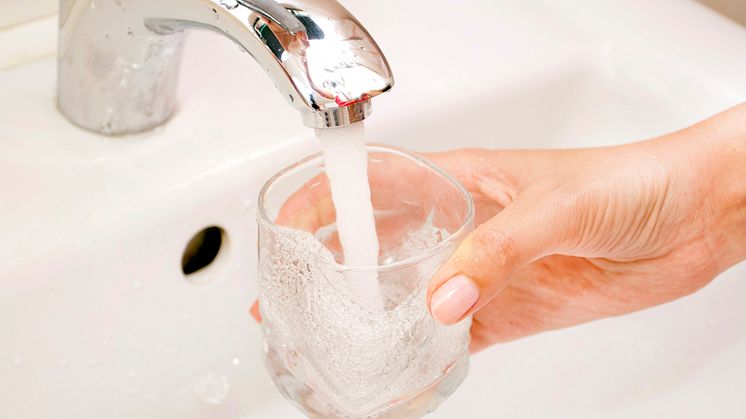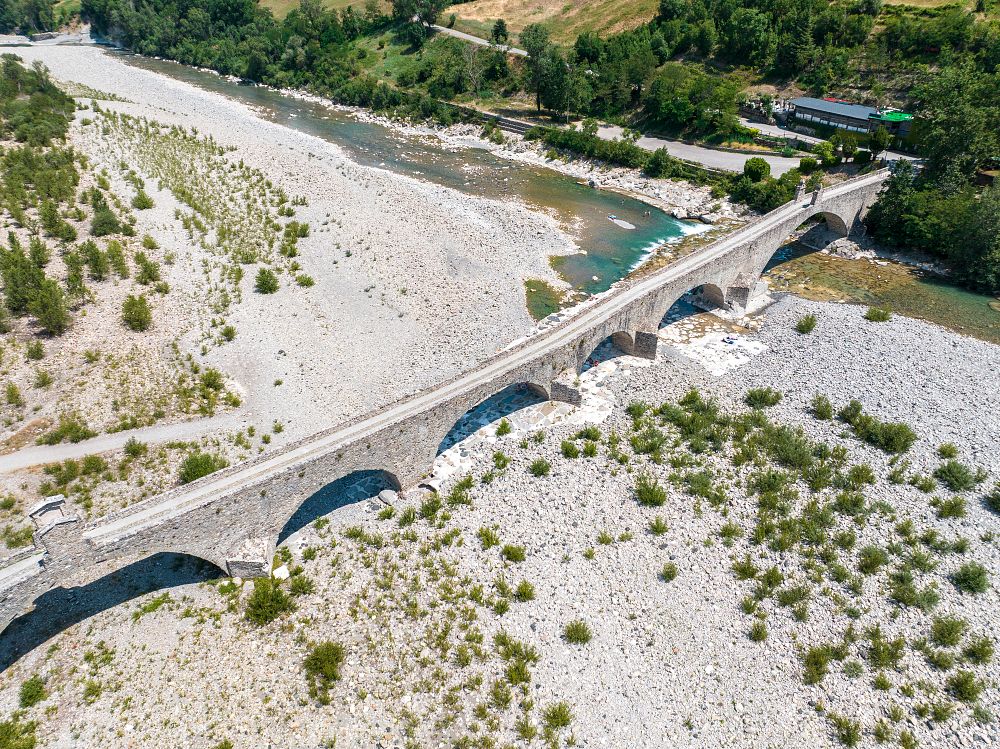
Blog post -
The Connection Between the Climate Emergency and Tap Water Quality
Picture this: You grab a glass or reusable bottle, turn the faucet on, and eagerly await that refreshing sip of water. But what if we told you that climate change is jeopardizing our access to clean tap water and posing risks to its quality? As global temperatures rise and weather patterns become increasingly erratic, the impact on our drinking water grows more apparent in developing and industrialized countries alike.
This eye-opening blog post explores the connection between climate change and tap water quality. We'll dive into how these environmental changes exacerbate water scarcity issues and hazards related to our safe drinking water supply. Get ready for a journey into the future as we uncover why addressing these challenges head-on is crucial. So, grab a glass of H2O (preferably purified!) as we embark on this exploration together!
Climate change is exacerbating both water scarcity and water-related hazards
The United Nations has stated that water and climate change are inextricably linked. The world body says climate change already affects the world's water in many different and complex ways. From unpredictable rainfall patterns to shrinking ice sheets, rising sea levels, floods, and droughts – most impacts of climate change come down to water. According to UNICEF, these impacts exacerbate water scarcity and water-related hazards as rising temperatures disrupt precipitation patterns and the entire water cycle.
The unavoidable truth is that the climate emergency's impact on our water supply cannot be ignored. One of the most significant consequences of climate change is the exacerbation of both water scarcity and water-related hazards. For example, about two billion people worldwide don't have safe drinking water today (SDG Report 2022), and roughly half of the world's population is experiencing severe water scarcity for at least part of the year (IPCC).
Also, as temperatures rise, so does the evaporation rate, leading to decreased freshwater availability on a planet where only 0.5 percent of water can be used – and climate change is dangerously affecting that supply. Consider the aerial photo below from 2022 showing the dry river below the Roman bridge of Bobbio over the Trebbia river, at Piacenza, Emilia-Romagna, in Italy (credit Naeblys

In the past twenty years, terrestrial water storage – including soil moisture, snow, and ice – has dropped 1 cm yearly. And water supplies stored in glaciers and snow cover are projected to further decline over the century, reducing water availability during warm and dry periods in regions supplied by meltwater from mountain ranges, where over one-sixth of the world's population currently live (IPCC).
The only conclusion is that with less water available for consumption, communities around Earth will face growing challenges in meeting their basic needs. The future will see droughts become more frequent and severe, leaving farmers struggling to irrigate their crops and resulting in food shortages. This scarcity also affects industries that rely heavily on water, such as manufacturing or power generation.
More water-related hazards
But it doesn't stop there. Climate change also intensifies water-related hazards like floods and storms. Warmer temperatures increase precipitation levels in certain regions while causing extended dry spells in others. These extreme weather events lead to flash floods contaminating drinking water sources with pollutants from overflowing rivers or sewage systems.
Moreover, rising sea levels threaten coastal areas by infiltrating groundwater reserves with saltwater intrusion. This not only reduces available freshwater resources but can also compromise the quality of tap water due to elevated salinity levels. This is already underway in archipelago environments worldwide, including Stockholm's vast network of 30,000 islands. The 200 inhabited island communities in the Baltic Sea around the Swedish capital already see growing salt contamination of their aquifers and water tables due to the changing climate, that's led to reduced rain and snowfall.
Drinking Water Scarcity: A Growing Concern
The climate emergency has far-reaching consequences for our access to clean tap water. It magnifies issues surrounding water scarcity and hazards related to our safe drinking supply. This double whammy requires urgent attention and sustainable solutions to ensure a future where everyone has access to clean drinking water despite the environmental challenges we face.
Bluewater believes access to clean and safe drinking water is a fundamental human right, yet millions of people around the world still lack this essential resource. Climate change is exacerbating the issue of drinking water scarcity, making it even more challenging for communities to secure enough water for their daily needs.
As temperatures rise and precipitation patterns become unpredictable, droughts become more frequent in many regions. Natural freshwater sources like rivers and lakes are drying up alarmingly. Communities that once relied on these sources now need more drinking water.
In addition to reduced availability, climate change also affects tap water quality. Rising temperatures can lead to increased contaminants in water sources, compromising their safety for consumption. With proper treatment and purification methods in place, communities may be able to consume contaminated water with potentially harmful consequences.
Addressing drinking water scarcity requires proactive measures from both individuals and governments alike. Investing in sustainable infrastructure projects like rainwater harvesting systems or desalination plants can alleviate the pressure on existing freshwater sources. Additionally, promoting efficient irrigation practices and raising awareness about conservation can go a long way in ensuring equitable access to clean drinking water.
While tackling drinking water scarcity is undoubtedly complex, we must prioritize finding solutions to safeguard this vital resource for future generations. By recognizing the impact of climate change on tap water quality and taking action now, we can work towards a world where no one has to worry about accessing clean drinking water.
Drinking water safety
Safe drinking water is a necessity for human survival. Ensuring that our tap water is free from contaminants and safe to consume should be a top priority. However, with the worsening impacts of climate change, the quality of our drinking water is being put at risk.
Climate change poses several challenges to tap water quality. Rising temperatures can lead to increased microbial growth in water sources, making it more difficult to maintain safe drinking water standards. Extreme weather events such as floods and droughts can contaminate water supplies, compromising their safety.
Addressing these concerns demands implementing effective purification methods. Many water experts believe that one of the most all-around effective ways of eliminating water contaminants is reverse osmosis (RO)., a process that involves using a semi-permeable membrane to remove water impurities, ensuring that only clean molecules pass through.
Reverse osmosis is a tried and tested way of purifying tap water. It effectively removes contaminants such as bacteria, viruses, heavy metals, and chemicals like chlorine and fluoride. Bluewater's unique second-generation RO SuperiorOsmosis™ technologyremoves all known water contaminants, creates less wastewater than other RO systems, and delivers low energy consumption and a longer filter life.
Climate change affects our access to clean drinking water and compromises its quality. To ensure the safety of our tap water, investing in technologies like reverse osmosis can provide an effective solution. While other purification methods exist (such as filtration or sterilization), reverse osmosis is one of the most advanced technologies currently available for home use. Knowing that you can enjoy high-quality drinking water without worrying about potential health risks associated with contaminated sources provides peace of mind.
Be proactive
By taking proactive measures now, we can protect ourselves and future generations from potential health risks associated with contaminated drinking water caused by climate change. Adapting our approach to tackle the impact of climate change on tap water quality requires us to prioritize everyone's access to safe drinking water.
By investing in innovative and efficient purification methods, such as the newer and more sustainable reverse osmosis solutions from Bluewater, we can take significant steps toward mitigating the challenges of climate change while also ensuring clean drinking water access for present and future generations. Let's make this choice today: Choose healthier living by choosing clean, drinkable tap water!


